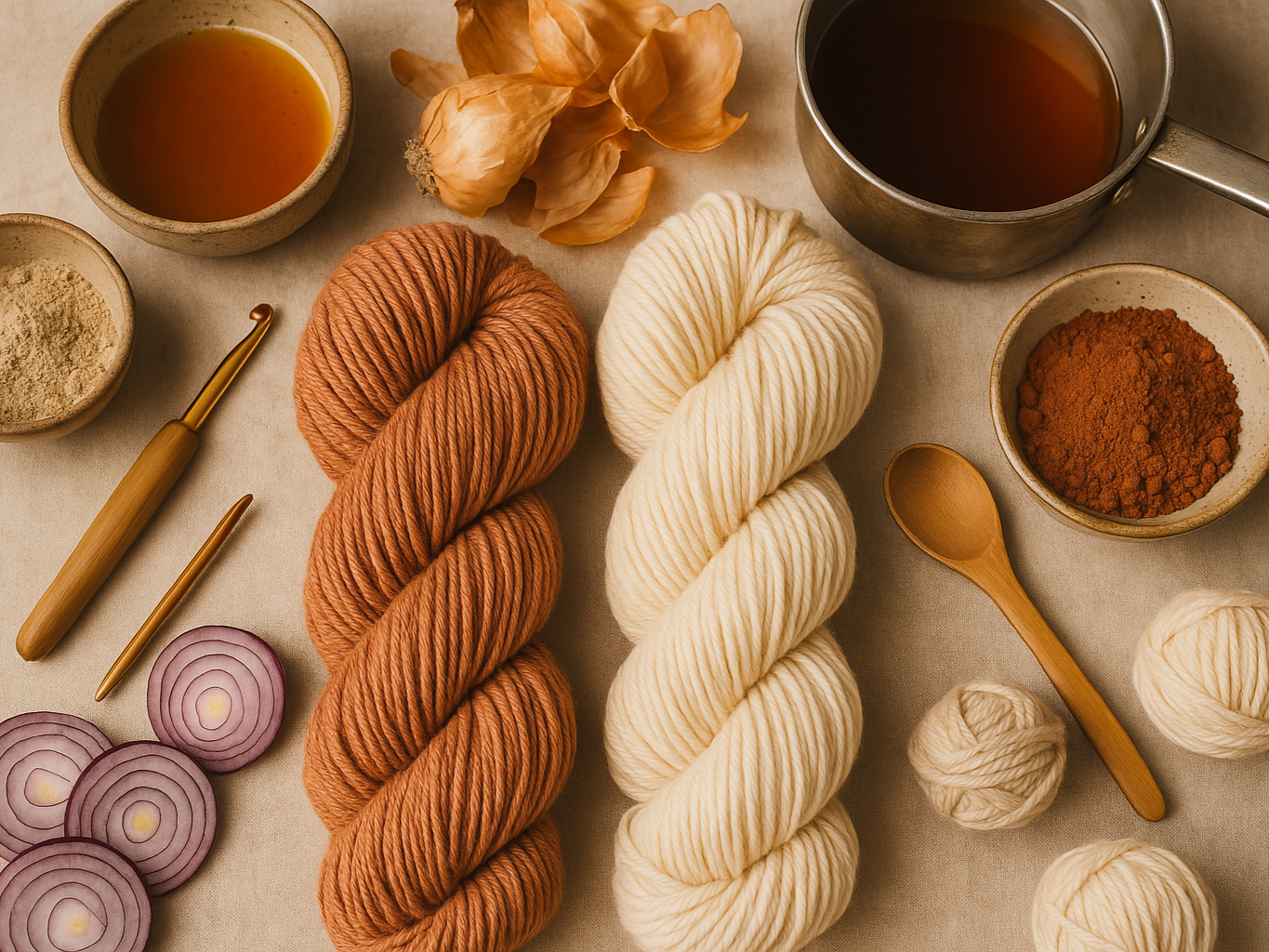Dyeing Techniques & Color Absorption: Natural vs. Synthetic

How fiber type, mordant, and method shape your final result
Color gives yarn its soul – but not every dye is created equal.
Whether you're simmering onion skins, splashing on Kool-Aid, or going full pro with acid dyes: the technique, fiber, and mordant all determine your result.
🌿 1. Natural Dyeing – Gentle color from plants
Natural dyes come from kitchen scraps, leaves, flowers, roots – and offer earthy, harmonious tones.
Popular natural dyestuffs:
-
Onion skins (golden to rust)
-
Avocado pits (rosé to salmon)
-
Walnut hulls (dark brown)
-
Elderberries (purple/gray)
-
Turmeric (bright yellow – but light-sensitive)
Basic process:
-
Mordant the yarn (e.g. with alum & cream of tartar)
-
Prepare dye bath (simmer plants 30–60 min)
-
Add pre-wet yarn and heat gently (max. 70 °C)
-
Let cool, rinse cold, and dry flat
💡 Natural dyes create subtle shades that vary with time and water pH – it's always a little magic.
🧪 2. Acid Dyeing – Bold, professional, precise
Acid dyes are synthetic powders designed for animal fibers like wool, alpaca, or silk.
They require heat, water, and mild acid (citric acid or vinegar).
Basic process:
-
Soak yarn
-
Dissolve dye in warm water with acid
-
Add yarn and gently heat (do not boil)
-
Allow dye to exhaust
-
Rinse and dry
Advantages:
✔ Vibrant, even colors
✔ Reproducible results
✔ Perfect for speckles, gradients, solids
⚠ Use gloves and ventilate well – these are chemical dyes.
🍭 3. Kool-Aid Dyeing – Easy, bright, and kid-friendly
Kool-Aid contains food coloring and citric acid – making it ideal for safe, simple dyeing, especially with kids.
How to:
-
Dissolve 1–2 packets in warm water
-
Add wool yarn
-
Heat in pot or microwave
-
Cool, rinse, and enjoy the pop of color!
💡 Only works well on animal fibers – plant fibers don't hold Kool-Aid dye.
🌸 Fiber Type & Mordant – The game changers
It's not just the dye – the fiber itself and any pre-treatment (mordant) can totally change the outcome:
Fiber | Color effect | Notes
- Wool | Deep, vibrant | Takes all dye methods well
- Alpaca | Slightly muted | Softer sheen, needs longer fix
- Silk | Bright and shiny | Delicate – gentle heat only
- Cotton | Pale or uneven | Needs tannin or soy mordant
- Blends | Mixed results | Only the protein fiber will absorb dye
💡 Pro tip: Try the same dyebath on different yarns – the results are stunningly different!
🧪 Mordant Matters
No matter which technique you use, mordanting preps your yarn to accept and retain the dye.
Common natural mordants:
-
Alum (for plant dyes on wool)
-
Cream of tartar (boosts shine)
-
Soy milk (for cellulose fibers)
✨ Without mordant, colors may wash out or fade quickly.
🎨 My Takeaway
Whether you're boiling onion skins, using Kool-Aid for neons, or going pro with acid dyes – each method has its charm.
🌿 Natural dyes = quiet beauty
🧪 Acid dyes = bright precision
🍭 Kool-Aid = colorful fun
And in the end? It's your yarn, your color story.
👋 Have you tried dyeing yarn before?
Share your results in the Facebook Group or tag me on Instagram – I'd love to see your color magic!
#naturaldyeing #koolaiddye #aciddyeyarn #dyeyarnathome #strickenimtrend
Just do it!
Yours,
Kathrin ☀️🧶
